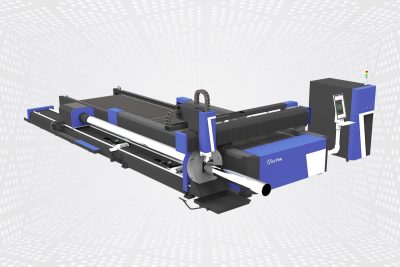Tube And Sheet Laser Cutting Machine
Our cutting-edge technology accommodates a wide range of materials, including mild steel, stainless steel, aluminum, and more, providing reliable, high-quality results. With customizable power options and advanced features, our tube and sheet laser cutting machines offer flexibility for various production scales and applications. From high-speed sheet metal cutting to precision tube cutting, our machines combine state-of-the-art fiber laser technology with robust engineering, making them an indispensable tool for businesses looking to enhance production efficiency while maintaining superior quality standards.
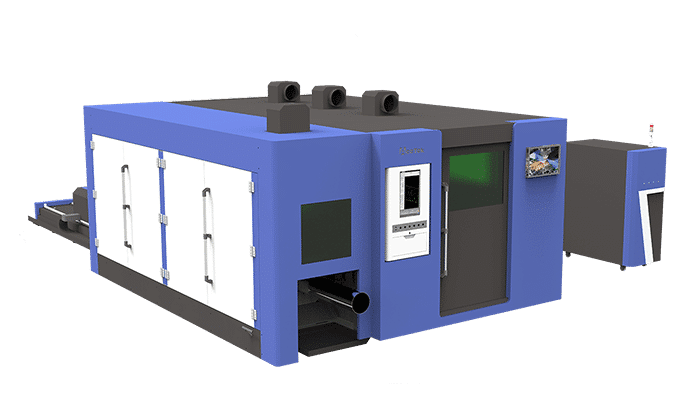
Product Range
-
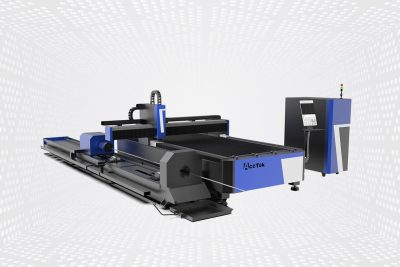
AKJ-FR Laser Cutting Machine
Rated 4.75 out of 5$30,000.00 – $166,800.00 Select options This product has multiple variants. The options may be chosen on the product page -

AKJ-FCR Laser Cutting Machine
Rated 4.75 out of 5$34,000.00 – $171,000.00 Select options This product has multiple variants. The options may be chosen on the product page -

AKJ-FBCR Laser Cutting Machine
Rated 4.75 out of 5$39,000.00 – $176,000.00 Select options This product has multiple variants. The options may be chosen on the product page
Optional Laser Cutting Machine Power
Materials That Can Be Cut
Laser Cutting VS. Other Methods
Laser Cutting vs. Mechanical Cutting
Laser cutting offers higher precision and faster cutting speeds compared to mechanical cutting. It eliminates physical tool wear and tear, resulting in smoother edges and minimal post-processing. Mechanical cutting, while suitable for thicker materials, can lead to rough edges and more material waste.
Laser Cutting vs. Water Jet Cutting
Water jet cutting is effective for thick materials but is slower and less efficient than laser cutting. Laser technology provides faster, more accurate cuts, particularly for thinner metals. Water jet cutting also requires constant maintenance of abrasives, whereas laser cutting is more cost-effective and requires less maintenance.
Laser Cutting vs. Plasma Cutting
While plasma cutting is faster for thicker materials, laser cutting produces higher precision with smoother edges and less heat distortion. Plasma cutting creates rougher edges and a larger heat-affected zone, which can require additional finishing, making laser cutting a more precise, clean, and cost-effective choice.
Why Choose AccTek Laser
Cutting-Edge Technology
AccTek Laser machines utilize the latest laser technology, ensuring high precision and fast cutting speeds. Our systems provide unmatched accuracy and efficiency, ensuring the best quality cuts across various materials with minimal distortion.
Custom Solutions
We understand that every business has unique requirements. That's why we offer customizable options, including power ranges, work area sizes, and cutting speeds, allowing you to tailor our machines to fit your specific production needs and material types.
Exceptional Energy Efficiency
Our laser cutting machines are designed for maximum energy efficiency. With lower power consumption and optimized performance, AccTek Laser machines help reduce operational costs, making them a cost-effective solution for both small and large-scale manufacturing.
Durability and Reliability
AccTek Laser cutting machines are engineered for long-term durability, with high-quality components and precision manufacturing. Our machines are designed to provide consistent, reliable performance, reducing maintenance needs and extending the lifespan of your equipment.
After-Sales Support
We believe in building long-term relationships with our customers. AccTek Laser provides exceptional after-sales support, including installation, training, and ongoing technical assistance. Our team is always ready to help you optimize machine performance and resolve any issues quickly.
Competitive Pricing and Value
At AccTek Laser, we offer high-performance laser-cutting machines at competitive prices, ensuring that you get the best value for your investment. Our machines deliver outstanding quality at an affordable cost, making us a trusted partner for your manufacturing needs.
Frequently Asked Questions
What Are Tube And Sheet Laser Cutting Machines?
For sheet cutting, the machine utilizes a high-powered laser beam focused through a cutting head to cut out intricate shapes, patterns, or profiles from flat sheet metal materials such as steel, aluminum, or stainless steel. This process is commonly employed in industries like automotive, aerospace, and manufacturing.
In addition to sheet cutting, the machine is equipped to handle tube-cutting tasks. It can accurately cut pipes, tubes, and profiles of various shapes and sizes, crucial for industries such as construction, furniture manufacturing, and infrastructure development.
By combining sheet and tube cutting capabilities into a single system, the tube and sheet laser cutting machine offers numerous benefits including high precision, minimal material wastage, and the ability to cut complex shapes with ease. Its versatility makes it an indispensable tool in modern metal fabrication processes.
How Much Do Tube And Sheet Laser Cutting Machines Cost?
It is important to note that the cost of ownership of a tube and sheet laser cutting machine includes not only the initial purchase price but also ongoing maintenance, repair, and operating costs. Additionally, the cost of materials such as laser cutting gas, replacement parts, and consumables such as lenses and nozzles should also be considered when calculating the total cost of running a laser cutting machine.
How Accurate Are Laser Cutting Machines For Tubes And Sheets?
For flat sheet metal cutting, modern laser cutting machines can typically achieve positioning accuracies within a range of ±0.1 mm to ±0.05 mm (0.004 inches to 0.002 inches) and cutting tolerances within ±0.2 mm to ±0.1 mm (0.008 inches to 0.004 inches) or even tighter in some cases.
For tube cutting, the accuracy can be similarly high, with positioning accuracies and cutting tolerances falling within similar ranges, although the geometry of the tube and any potential warping may affect these values slightly.
The actual achievable accuracy also depends on factors such as the material being cut, the thickness of the material, the laser power, the cutting speed, and the complexity of the cutting path. Additionally, regular machine maintenance and calibration help ensure long-term, stable performance. Overall, tube and sheet laser cutting machines offer excellent precision and are suitable for applications requiring tight tolerances and high-quality cuts.
What Shapes Can Tube And Sheet Laser Cutting Machines Cut?
- Flat Sheet Shapes
- Straight Lines: The machine can cut straight lines with precision, allowing for the creation of simple geometric shapes such as squares, rectangles, and triangles.
- Curves: It can cut curved shapes, including circles, arcs, and ellipses, enabling the fabrication of rounded or organic forms.
- Intricate Designs: The machine’s high precision allows for the cutting of intricate patterns, intricate designs, and detailed shapes with fine features.
- Tube and Profile Shapes
- Round Tubes: The machine can cut round tubes accurately, allowing for the creation of components such as pipes, cylinders, and circular profiles.
- Square and Rectangular Tubes: It can cut square and rectangular tubes with precision, useful for fabricating frames, structures, and other components with angular profiles.
- Open Profiles: The machine can cut open profiles with complex shapes, such as C-channels, U-channels, and other custom profiles used in various applications.
- Angled Cuts: It can make angled cuts on tubes and profiles, facilitating the fabrication of components with mitered edges or beveled features.
The tube and sheet laser cutting machine offers versatility in cutting a diverse range of shapes, making it suitable for a wide array of applications across industries such as manufacturing, construction, automotive, aerospace, and more.
How Much Do Tube And Sheet Laser Cutting Machines Cost To Operate?
- Electricity: Laser-cutting machines consume electricity to power their laser sources, motion systems, cooling systems, and other components. The electricity cost depends on factors such as the machine’s power consumption, cutting speed, and duration of operation.
- Consumables: Laser cutting machines use consumable parts that need regular replacement, including cutting nozzles, lenses, protective windows, and assist gases (such as nitrogen or oxygen). The cost of consumables can vary depending on the machine’s usage and the materials being cut.
- Maintenance and Repairs: Regular maintenance tasks such as cleaning, lubrication, and component replacement ensure machine reliability and performance. The cost of maintenance and repairs can vary depending on the machine’s age, usage, and any unexpected issues that arise.
- Operator Labor: The labor cost associated with operating the machine, including setup, programming, loading/unloading materials, and monitoring the cutting process.
- Gas Consumption: If the machine uses assist gases (such as nitrogen or oxygen) for cutting, there will be costs associated with purchasing and refilling gas cylinders or maintaining gas generation systems.
- Waste Disposal: Depending on local regulations and the materials being cut, there may be costs associated with disposing of waste materials, such as scrap metal or laser-cut waste.
The cost to operate tube and sheet laser cutting machines can vary widely depending on factors such as machine efficiency, material costs, labor rates, and other operational considerations. However, when properly maintained and operated efficiently, these machines can offer cost-effective solutions for metal fabrication processes.
What Safety Features Are Included With Tube And Sheet Laser Cutting Machines?
- Enclosed Work Area: Most laser cutting machines have enclosed work areas to contain the laser beam and prevent exposure to radiation and flying debris during cutting operations.
- Safety Interlocks: Interlock systems prevent the machine from operating if access doors, panels, or enclosures are open. This ensures that operators cannot access the cutting area while the machine is in operation.
- Emergency Stop (E-stop) Buttons: Emergency stop buttons allow operators to quickly halt machine operations in case of emergencies or unsafe conditions.
- Safety Light Curtains: Light curtains or sensors around the machine’s perimeter detect the presence of objects or people and automatically stop the machine if someone enters the danger zone.
- Beam Collision Detection: Sensors or systems that monitor for potential collisions between the laser beam and the workpiece, cutting head, or other machine components, automatically pausing or shutting down the machine to prevent damage or injury.
- Exhaust and Fume Extraction Systems: Effective exhaust and fume extraction systems remove smoke, fumes, and particulates generated during cutting, minimizing exposure to harmful airborne contaminants.
- Safety Glasses and Protective Equipment: Operators and bystanders may be required to wear safety glasses or other personal protective equipment (PPE) to protect against laser radiation, flying debris, and other hazards.
- Machine Status Indicators: Visual and audible indicators provide real-time feedback on the machine’s status, including power-on, standby, cutting in progress, and error conditions.
- Training and Safety Procedures: Comprehensive operator training programs and safety procedures ensure that operators understand how to safely operate the machine, handle materials, and respond to emergencies.
- Compliance with Safety Standards: Tube and sheet laser cutting machines are designed and manufactured by industry safety standards and regulations to ensure safe operation and compliance with legal requirements.
By incorporating these safety features and adhering to best practices for safe operation, tube and sheet laser cutting machines can provide a safe working environment for operators and bystanders while delivering efficient and precise cutting capabilities.
How Long Is the Life of Tube and Sheet Laser Cutting Machines?
- Laser Source Lifespan: The fiber laser source typically lasts around 20,000-30,000 hours of cutting time, depending on the power and quality of the laser. Higher-quality fiber lasers tend to last longer.
- Machine Maintenance: Regular maintenance, such as cleaning the lenses, ensuring proper cooling, and monitoring the mechanical components, can significantly extend the lifespan. Well-maintained machines can work for decades.
- Usage Intensity: Heavy, continuous use (e.g., 24/7 operations) may wear the machine down more quickly, while occasional use can extend its life. Machines that operate at lower capacities or less frequently tend to last longer.
- Technology Advancements: As technology evolves, older models may become outdated in terms of features and efficiency, even if the machine is still operational. However, the core components like the laser source and mechanical parts can still function for many years.
With proper operation and maintenance, tube and sheet laser cutting machines can continue to provide efficient cutting for many years, offering high productivity and quality.
What Are The Maintenance Requirements For Tube And Sheet Laser Cutting Machines?
- Daily Cleaning
- Remove debris, dust, and metal shavings from the cutting area, including the workpiece support surfaces and the machine’s enclosure. Clean the machine’s lenses, mirrors, and other optical components to ensure consistent laser beam quality.
- Regular Inspection
- Check for signs of wear or damage on critical components such as cutting nozzles, focusing lenses, mirrors, and protective windows. Replace them as needed.
- Inspect belts, chains, and other mechanical parts for signs of wear, tension, or misalignment. Adjust or replace as necessary.
- Examine the machine’s motion systems, including linear guides, ball screws, and drive motors, to ensure smooth operation and accuracy.
- Lubrication
- Lubricate moving parts according to the manufacturer’s recommendations to prevent excessive wear and friction.
- Clean and lubricate the cutting head’s autofocus mechanism, if applicable.
- Optical Alignment
- Periodically check and adjust the alignment of the laser beam delivery system, including mirrors and focusing optics, to maintain cutting accuracy.
- Align the laser beam with the nozzle for optimal cutting performance.
- Cooling System Maintenance
- Monitor and maintain the cooling system, including water chillers or air coolers, to prevent overheating of the laser source.
- Check coolant levels, filters, and hoses regularly and replace or clean them as needed.
- Software Updates and Calibration
- Keep the machine’s control software up to date with the latest updates and patches provided by the manufacturer.
- Perform periodic calibration of the machine’s positioning systems and laser power output to ensure accurate cutting results.
- Operator Training
- Provide ongoing training for machine operators to ensure proper operation, safety practices, and awareness of potential maintenance issues.
By following a proactive maintenance schedule and addressing issues promptly, operators can minimize downtime, optimize cutting quality, and maximize the lifespan of their tube and sheet laser cutting machines. Regular servicing by qualified technicians may also be necessary for more in-depth maintenance tasks.
Related Resources
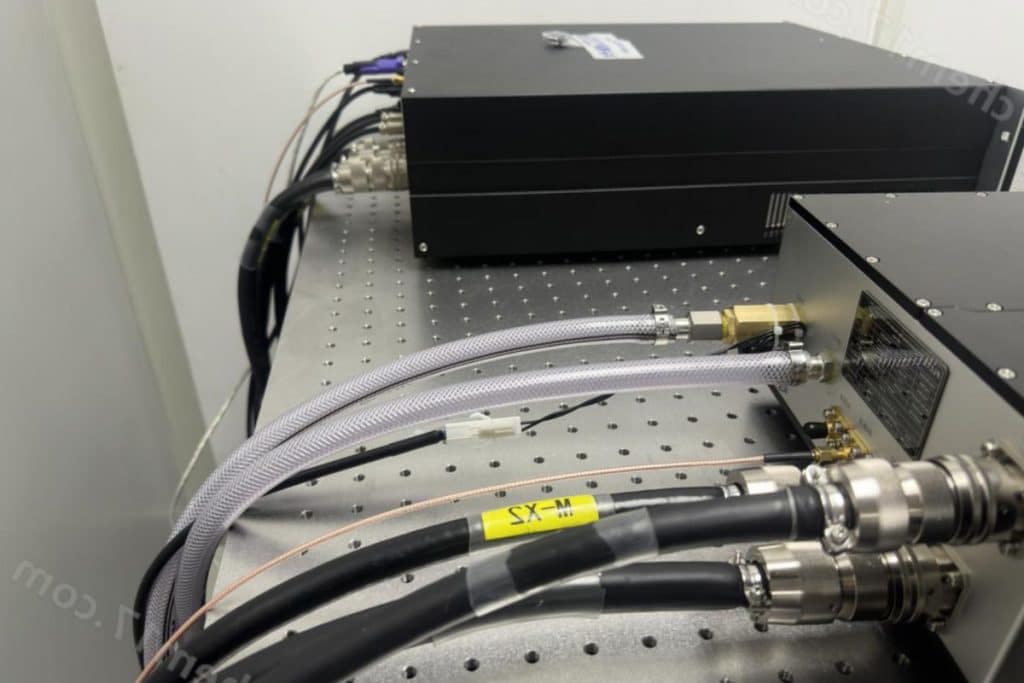
Do Fiber Laser Generators Lose Power over Time?
This article focuses on the reasons why fiber laser generator power decreases over time and proposes effective strategies to mitigate power loss through high-quality equipment, regular maintenance, and an optimized
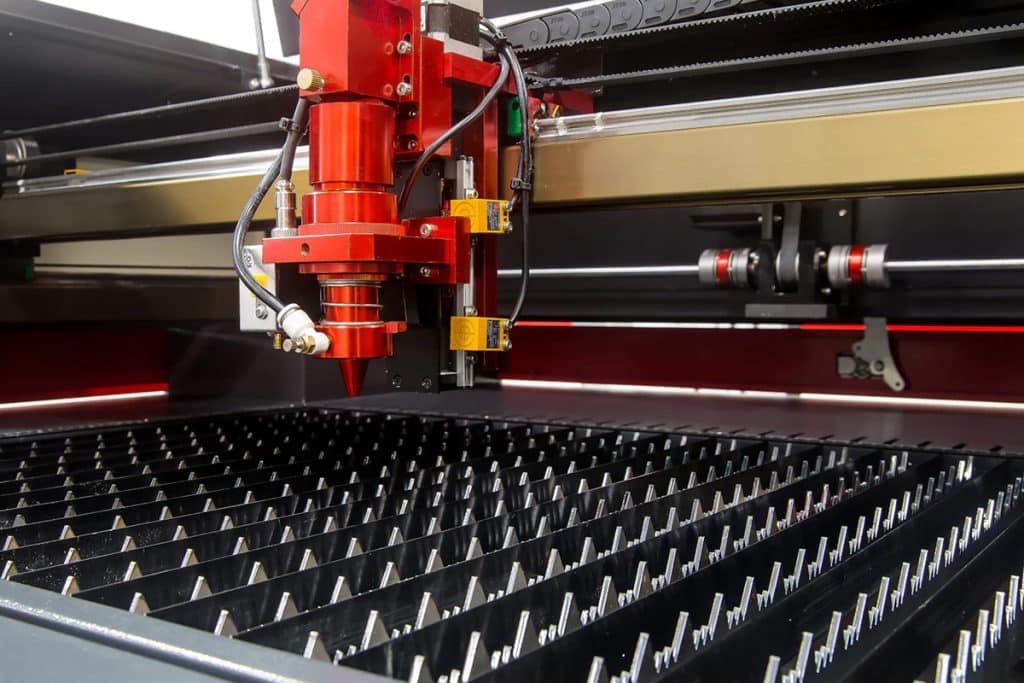
How Does a CO2 Laser Cutting Machine Achieve High-Precision Cutting?
This article mainly introduces the principles and key technologies behind the high-precision cutting capabilities of CO2 laser cutting machines, and analyzes their core structural components and advantages.
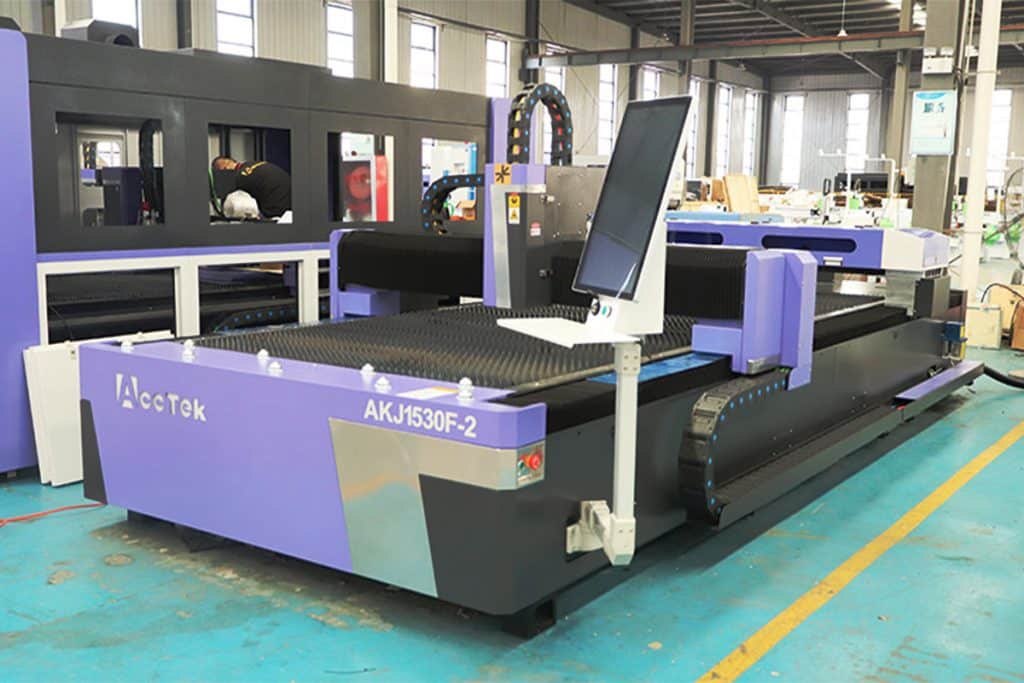
Gantry Fiber Laser Cutting Machine Vs Desktop Fiber Laser Cutting Machine: Comparative Analysis
This article compares and analyzes the structure, performance, and application scenarios of gantry and desktop fiber laser cutting machines to help companies choose the most suitable equipment.
Get Laser Cutting Solutions
We offer a range of models with customizable options to fit your material types, production volumes, and cutting requirements. From initial consultation and machine selection to installation and after-sales support, AccTek Laser is your trusted partner in achieving high-quality, efficient cutting solutions. Contact us today to discuss how our laser-cutting technology can enhance your operations and take your production to the next level.

